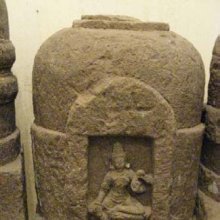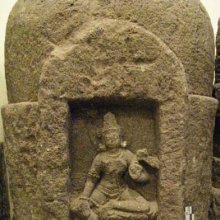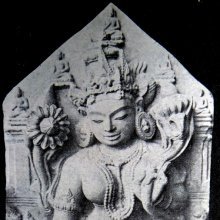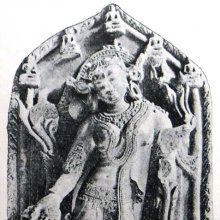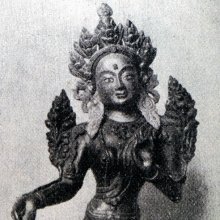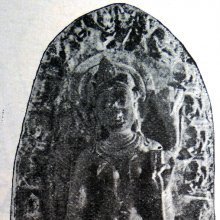Ashokakanta, Aśokakāntā, Ashoka-kanta: 1 definition
Introduction:
Ashokakanta means something in Buddhism, Pali. If you want to know the exact meaning, history, etymology or English translation of this term then check out the descriptions on this page. Add your comment or reference to a book if you want to contribute to this summary article.
The Sanskrit term Aśokakāntā can be transliterated into English as Asokakanta or Ashokakanta, using the IAST transliteration scheme (?).
Images (photo gallery)
(+6 more images available)
In Buddhism
Tibetan Buddhism (Vajrayana or tantric Buddhism)
Source: archive.org: The Indian Buddhist IconographyAśokakāntā (अशोककान्ता) is a variety of Mārīcī: one of the various emanations of Vairocana, as mentioned in the 5th-century Sādhanamālā (a collection of sādhana texts that contain detailed instructions for rituals).—Her Colour is yellow; her Vāhana is the pig; her Āsana is standing; her Mudrā is the varada; her distinctive feature is the left hand touching the Aśoka bough.—Ordinarily, Mārīcī has two arms and one face. She is called Aśokakāntā when she holds the bough of an Aśoka tree in the left hand and exhibits the varada-mudrā in the right hand ; but she is called Āryamārīcī if she carries the needle and the string in her two hands.
The Dhyāna (meditation instructions) of Aśokakāntā described in the Sādhanamālā as follows:—
“I bow to Mārīcī who rides the sow of golden colour, whose complexion is like the colour of molten gold. She stands in a sportive attitude on the moon over the lotus, and holds with her left hand the bough of an Aśoka tree, and displays the varada pose in the right. She bears the image of the Dhyāni Buddha (Vairocana) on the crown, is decorated with bright jewels, wears white garments and grants assurance of safety (to the world).”

Tibetan Buddhism includes schools such as Nyingma, Kadampa, Kagyu and Gelug. Their primary canon of literature is divided in two broad categories: The Kangyur, which consists of Buddha’s words, and the Tengyur, which includes commentaries from various sources. Esotericism and tantra techniques (vajrayāna) are collected indepently.
See also (Relevant definitions)
Partial matches: Ashoka, Kanta.
Full-text: Aryamarici, Khadiravani, Khadiravanitara, Varadatara, Varada, Marici, Mahasri, Sitatapatra, Vashyatara, Vajravarahi, Maricipicuva, Ushnishavijaya.
Relevant text
Search found 3 books and stories containing Ashokakanta, Aśokakāntā, Ashoka-kanta, Aśoka-kāntā, Asokakanta, Asoka-kanta; (plurals include: Ashokakantas, Aśokakāntās, kantas, kāntās, Asokakantas). You can also click to the full overview containing English textual excerpts. Below are direct links for the most relevant articles:
The Indian Buddhist Iconography (by Benoytosh Bhattachacharyya)
Figure 169 - Emanations of Amoghasiddhi: Mahāśrī Tārā
Figure 166-168 - Emanations of Amoghasiddhi: Khadiravaṇī Tārā
Stupas in Orissa (Study) (by Meenakshi Chauley)
The gods of northern Buddhism (by Alice Getty)
